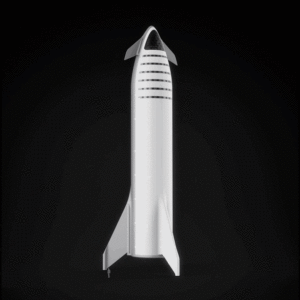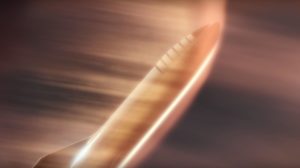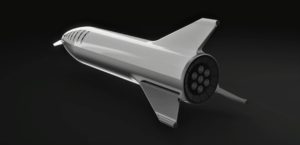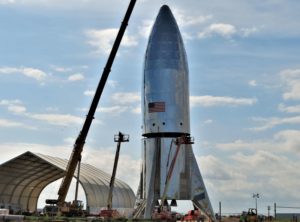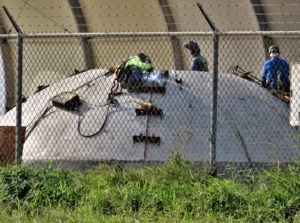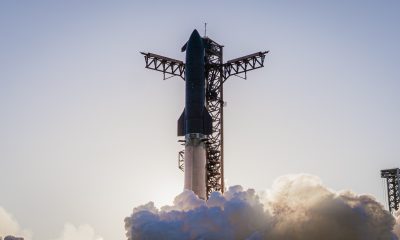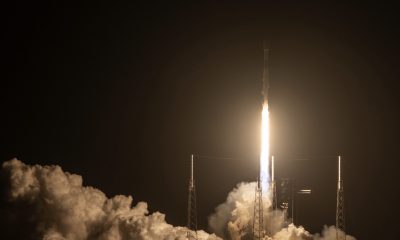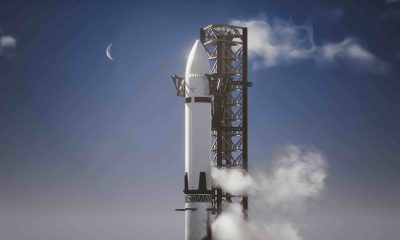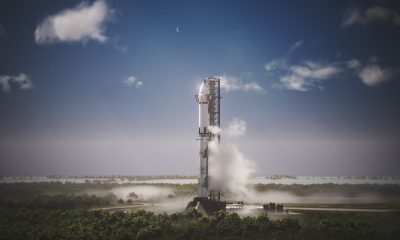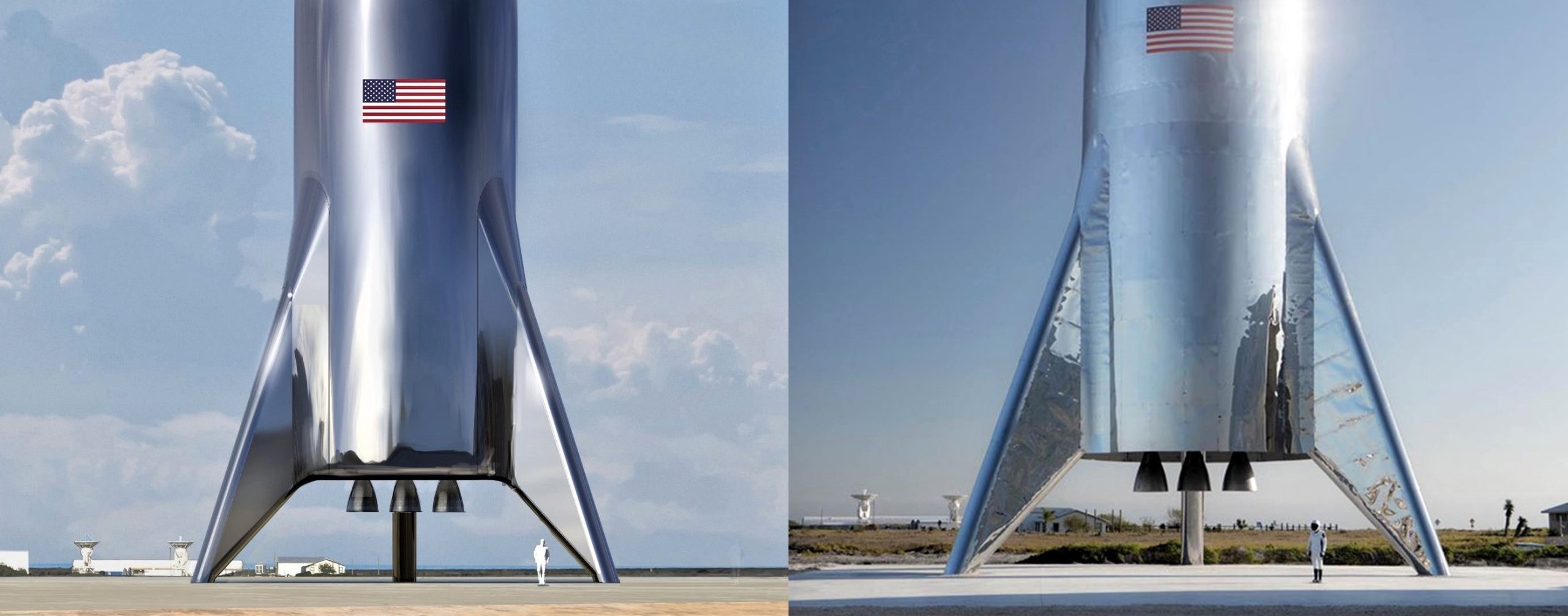

News
SpaceX CEO Elon Musk says first orbital Starship prototype will be done by June
SpaceX CEO Elon Musk says that the company’s first Starship prototype – a low-fidelity hop test vehicle – has finished assembly in South Texas, paving the way towards a series of experimental vertical take-off or landing (VTOL) hop tests that could begin as early as February or March 2019.
One step beyond the prototype currently rising out of the coastal Texas wetlands, Musk also indicated that the first orbital Starship prototype – essentially the spacecraft’s first full-fidelity test article – could be completed as early as June 2019, a truly extraordinary pace of development for a program as complex and cutting-edge as BFR.
Starship test flight rocket just finished assembly at the @SpaceX Texas launch site. This is an actual picture, not a rendering. pic.twitter.com/k1HkueoXaz
— Elon Musk (@elonmusk) January 11, 2019
Starhopper rising
Barely six weeks after work began on the massive Starship prototype, SpaceX’s Starhopper appears to have grown to its full ~40m (~130 ft) height in South Texas. Following a preliminary fit test on Tuesday, January 8th, workers made a second attempt on Wednesday and completed the final attachment of Starhopper’s upper and lower halves. Intriguingly, no time was wasted spot-welding the halves together after their successful docking, and an additional sheet of stainless steel has been welded over the seam in the hours since then.
- It remains to be seen if BFR can be made as reusable and reliable as it will need to be to sustainably support interplanetary humans. (SpaceX)
- Eventually, SpaceX may graduate into high-speed, high-altitude flight tests of the prototype spaceship to fully test the design of its its control surfaces and “ultra-lightweight heat shield”. (SpaceX)
- (SpaceX)
- BFR’s booster, now known as Super Heavy. (SpaceX)
- BFR (2018) breaks through a cloud layer shortly after launch. (SpaceX)
However, what looks like 9m-diameter (~30 ft) steel tank domes are being assembled and welded together at the same SpaceX facility, despite the fact that no domes have been observed being installed inside Starhopper. Musk did seem to indicate that even Starhopper – requiring far less propellant than an orbital Starship – will still feature full 9m (~30 foot) diameter tanks. This could imply that the newly integrated Starhopper has yet to have propellant tank domes installed inside and will need to be taken apart again to allow for that critical final step. If that is not the case, the only possible explanation is that Starhopper’s propellant tanks will actually be less than 9m in diameter and will be lifted up through the vehicle’s aft for installation.
One last increasingly improbable possibility is that a significant portion of the hopper’s upper half will be or already is a pressure vessel capable of holding cryogenic propellant, although the process of actually watching the less than surgical fabrication does not inspire a great deal of confidence in any potential pressure vessel aspirations. In the meantime, we have been given the first look at what the outside of Starhopper will look like once complete. According to SpaceX CEO Elon Musk, hop tests of the imposing vehicle could begin as few as 4-8 weeks from now.
- Starhopper is assembled for the second time, January 9th. (NSF – bocachicagal)
- And voila! (NSF – bocachicagal)
- Meanwhile, giant 9m-diameter tank domes are being assembled and welded together a few hundred feet away from Starhopper. (NSF – bocachicagal)
To orbit, and beyond!
Aside from offering the above photo and comparing Starhopper’s prospects to those of Falcon 9’s Grasshopper and F9R hop test articles (i.e. very suborbital and very short-lived), Musk also stated that the first orbital Starship prototype could be completed as early as June 2019, as few as three months after Starhopper’s first hop test. This paints at least a rough picture of the planning going on for BFR’s flight test regime, beginning with a suborbital hop test prototype, moving to a full-fidelity Starship capable of high-speed intra-atmospheric heat shield and aero surface testing, and finally full-up orbital testing with the completion of the first BFR booster (now known as Super Heavy).
Should be done with first orbital prototype around June
— Elon Musk (@elonmusk) January 11, 2019
Both, but demo Starship is being built now, whereas Super Heavy hardware will start getting built in spring
— Elon Musk (@elonmusk) December 9, 2018
According to Musk, the first Super Heavy booster will begin production and assembly as early as spring 2019, while the CEO stated that he believed the odds of BFR (Starship/Super Heavy) reaching orbit by 2020 were 60% and “growing rapidly” thanks to a recent move from carbon composite tankage to stainless steel. If SpaceX and Musk keep putting their money where their mouths are and rapidly building test articles and prototypes, that orbital debut might actually be less insane than it sounds. We’ll find out soon enough.
For prompt updates, on-the-ground perspectives, and unique glimpses of SpaceX’s rocket recovery fleet check out our brand new LaunchPad and LandingZone newsletters!
News
Tesla shares rare peek at Semi factory’s interior
The new video of the Tesla Semi factory was posted by the official Tesla account on X.
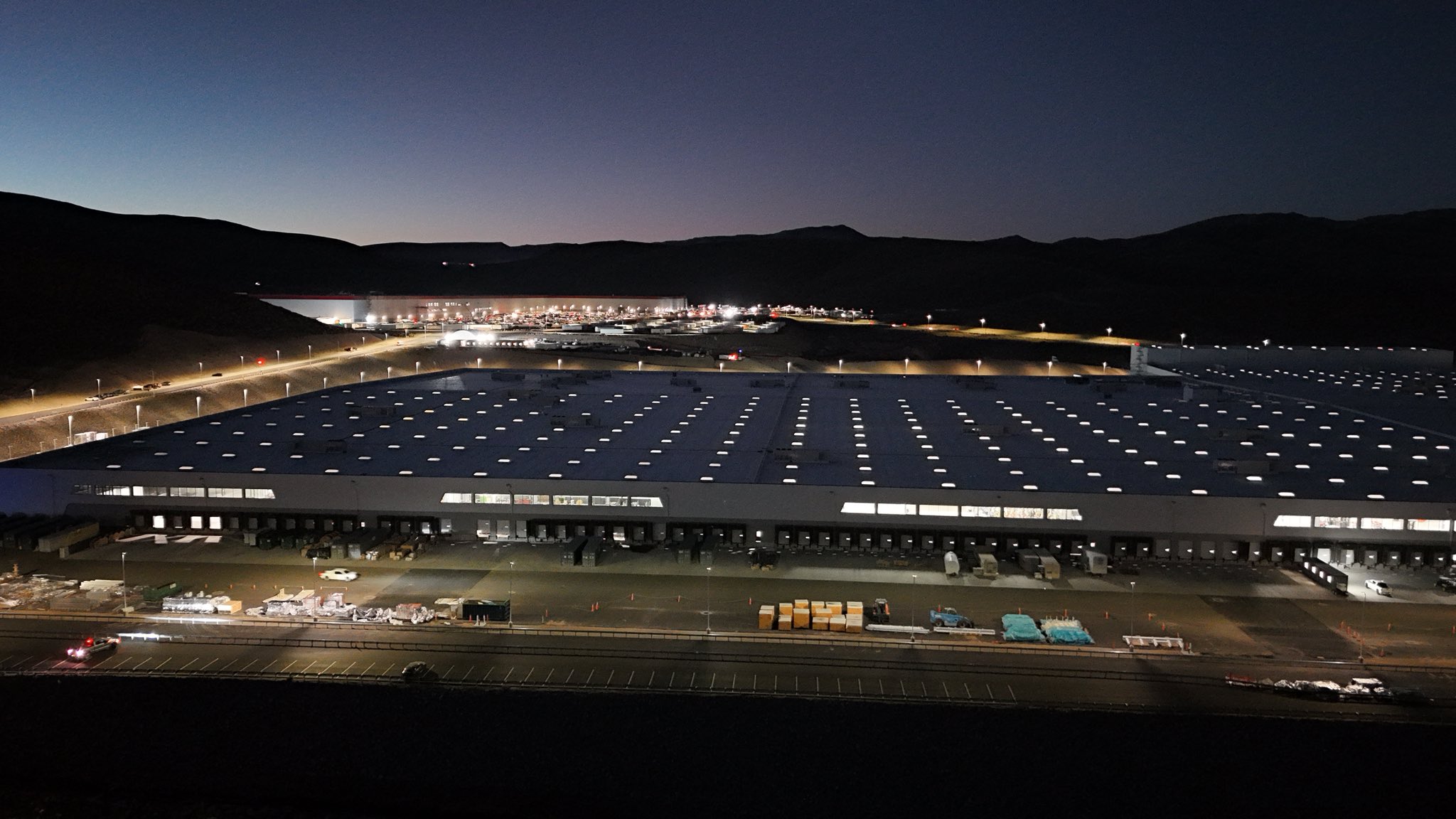
Tesla has shared a rare peek inside the factory of the Tesla Semi, which is expected to start production next year. Based on the video, it appears that work in the facility’s interior is ongoing, just as hinted at by drone flyers of the site.
Tesla Semi factory
The new video of the Tesla Semi factory, which is located close to Giga Nevada, was posted by the official Tesla account on X. While the video was short at less than 30 seconds long, it did show several parts of the factory’s interior, from its gigantic machines to its expansive space. The company also showed some initial production units of the Semi operating around the site.
Elon Musk shared a quick update on the Tesla Semi’s production at the 2025 Annual Shareholder Meeting. While addressing the company’s shareholders, Musk confirmed that production of the Semi is on track for 2026.
“Starting next year, we (will) manufacture the Tesla Semi. So this, we already have a lot of prototype Tesla Semis in operation. PepsiCo and other companies have been using the Tesla Semi for quite some time. But we will start volume production at our Northern Nevada factory in 2026,” Musk said.
Tesla Semi redesign
Apart from Elon Musk’s confirmation that the Semi will indeed enter production next year, Tesla also showed an image of the Class 8 all-electric truck’s overall look. Based on a slide that was shown during Musk’s presentation, it appears that the Semi has undergone a pretty major redesign. The redesigned Semi features updated design cues that align with the company’s current lineup.
Immediately noticeable from the Semi’s updated design is its front end, which now feature headlights that resemble the style of the Cybertruck, Cybercab, and the new Model Y. Several other changes appear designed to improve aerodynamics, with Tesla now stating that the Semi has an efficiency of 1.7 kWh per mile. Side cameras, likely for FSD, are also quite prominent on the redesigned Semi.
Elon Musk
Tesla says texting and driving capability is coming ‘in a month or two’
“In the next month or two, we’re going to look at the safety statistics, but we’re going to allow you to text and drive, essentially.”

Tesla CEO Elon Musk said that within the next month or two, the company will be able to open the ability for people to text and drive because its Full Self-Driving suite will be robust enough to allow drivers to take their attention away from the road.
In its current state, Tesla Full Self-Driving is a supervised driver assistance suite that requires the vehicle operator to maintain control of the vehicle and pay attention to the road surroundings.
However, the company has been aiming to release a fully autonomous version of the Full Self-Driving suite for years, teasing its future potential and aiming to release a Level 5 suite as soon as possible.
CEO Elon Musk believes the company is on the cusp of something drastic, according to what he said at yesterday’s Annual Shareholder Meeting.
One thing Musk hinted at was that the company should be able to allow those sitting in the driver’s seat of their cars to text and drive “in the next month or two,” as long as the statistics look good.
He said:
“In the next month or two, we’re going to look at the safety statistics, but we’re going to allow you to text and drive, essentially.”
The company recently transitioned to its v14 Full Self-Driving suite, which is its most robust to date, and recently expanded to Cybertruck, completing its rollout across the vehicle lineup.
Currently, Tesla is running v14.1.5, and when major improvements are made, that second number will increase, meaning v14.2 will be the next substantial improvement.
Musk said that v14.3 will be when you can “pretty much fall asleep and wake up at your destination.”
🚨🚨 Elon Musk says Tesla Full Self-Driving v14.3 will be when you can “pretty much fall asleep and wake up at your destination.”
We are on v14.1 currently 👀 pic.twitter.com/KMkWh5Qa7T
— TESLARATI (@Teslarati) November 6, 2025
We’ve heard a considerable amount of similar statements in the past, and Tesla owners have been conditioned to take some of these timeframes with autonomous driving with a grain of salt.
However, with the upgrades in FSD over the past few months, especially with the rollout of Robotaxi in Austin, which does not utilize anyone in the driver’s seat for local roads, it does not seem as if autonomy is that far off for Tesla.
News
Tesla Semi undergoes major redesign as dedicated factory preps for deliveries
The Semi has been one of the most anticipated products in the Tesla lineup due to the disruption it could cause in the trucking industry.

Tesla put its all-electric Semi truck through quite a major redesign as its dedicated factory for the vehicle is preparing for initial deliveries to the public starting next year.
The Semi has been one of the most anticipated products in the Tesla lineup due to the disruption it could cause in the trucking industry.
It has already been in numerous pilot programs for some pretty large companies over the past couple of years, PepsiCo. being one of them, and it is moving toward first deliveries to other companies sometime in 2026.
Yesterday at the 2025 Annual Shareholder Meeting, Tesla unveiled its new Semi design, which underwent a pretty significant facelift to match the aesthetic and vibe of the other vehicles in the company’s lineup.
Additionally, Tesla announced some other improvements, including changes to efficiency, and some other changes that we did not get details on yet.
The first change was to the design of the Semi, as Tesla adopted its blade-like light bar for the Class 8 truck, similar to the one that is used on the new Model Y and the Cybertruck:

There also appear to be a handful of design changes that help with aerodynamics, as its efficiency has increased to 1.7 kWh per mile.
Tesla also said it has an increased payload capability, which will help companies to haul more goods per trip.
All of these changes come as the company’s Semi Factory, which is located on the same property as its Gigafactory in Reno, Nevada, is just finishing up. In late October, it was shown that the Semi facility is nearly complete, based on recent drone imagery from factory observer HinrichsZane on X:
The factory will be capable of producing about 50,000 Tesla Semi units annually when it is completely ramped. The company has major plans to help get the Semi in more fleets across the United States.
Other entities are also working to develop a charging corridor for electric Class 8 trucks. The State of California was awarded $102 million to develop a charging corridor that spans from Washington to Southern California.
Another corridor is being developed that spans from Southern California to Texas, and 49 applicants won $636 million from the Department of Transportation for it.
Tesla requested funding for it, but was denied.
The Semi has been a staple in several companies’ fleets over the past few years, most notably that of Frito-Lay and PepsiCo., who have reported positive experiences thus far.
Musk said last year that the Semi had “ridiculous demand.”
-

 Elon Musk1 week ago
Elon Musk1 week agoNeuralink’s first patient could receive an upgrade: Elon Musk
-

 News1 week ago
News1 week agoTesla Cybercab spotted testing on public roads for the first time
-
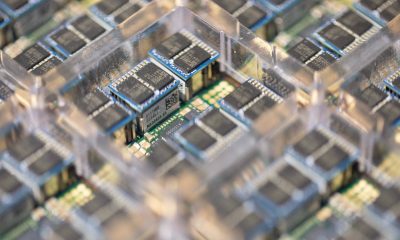
 Elon Musk5 days ago
Elon Musk5 days agoElon Musk subtly confirms one of Tesla AI8’s uses, and it’s literally out of this world
-

 Elon Musk3 days ago
Elon Musk3 days agoTesla teases new AI5 chip that will revolutionize self-driving
-
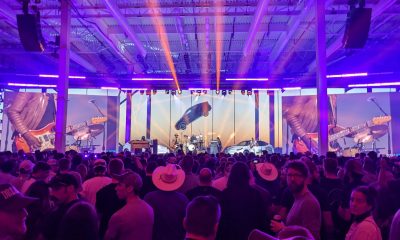
 Elon Musk2 days ago
Elon Musk2 days agoTesla 2025 Annual Shareholder Meeting: How to watch
-
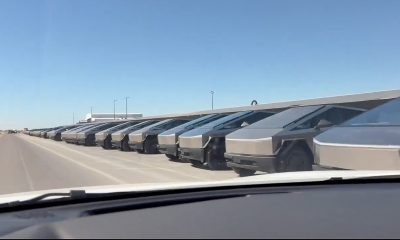
 Cybertruck5 days ago
Cybertruck5 days agoTesla Cybertruck fleet takes over at SpaceX’s Starbase
-
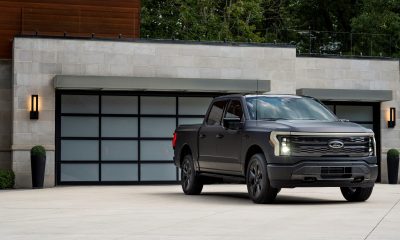
 News1 day ago
News1 day agoFord reportedly considers cancelling F-150 Lightning: ‘The demand is just not there’
-
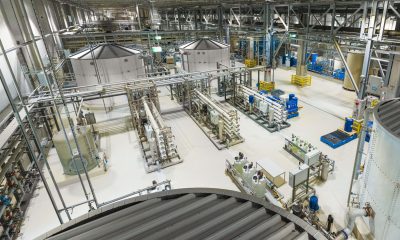
 News3 days ago
News3 days agoTesla Giga Berlin hits a sustainability milestone that’s so impressive, it sounds fake

